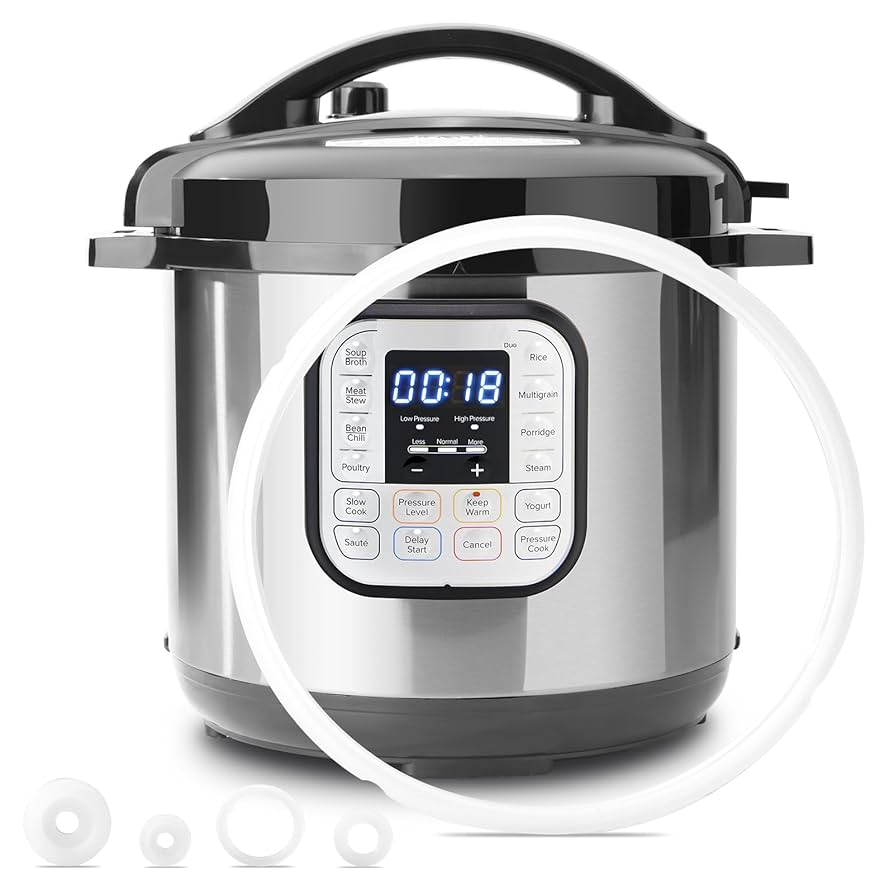Sealing Ring Replacement for Rice Cookers: A Complete Guide
Table of Contents
Rice cookers are reliable kitchen companions, but like any appliance, they require regular upkeep. One of the most important maintenance tasks is replacing the sealing ring, also called the gasket. This small but crucial part ensures your cooker seals properly, maintaining pressure, locking in heat, and cooking rice evenly.
Over time, the sealing ring can wear out, leading to leaks, longer cooking times, or uneven results. This guide covers everything you need to know about sealing ring replacement, from identifying when it’s time for a change to choosing the right replacement and installing it correctly.
What is a Sealing Ring in a Rice Cooker?
The sealing ring is a circular silicone or rubber gasket that sits inside the lid of many rice cookers, especially pressure-style models. Its purpose is to create an airtight seal during cooking, keeping moisture and heat trapped inside. Without it, the cooker may lose steam, affecting both cooking performance and safety.
How Do You Know If Your Rice Cooker Sealing Ring Needs Replacement?
A sealing ring doesn’t last forever. Here are the most common signs it needs attention:
- Visible cracks, warping, or discoloration
- A strong lingering odor that doesn’t wash out
- Steam escaping from the lid during cooking
- Rice taking longer to cook than usual
- Food coming out undercooked or unevenly cooked
If you notice any of these issues, it’s time to get a new ring.
How Often Should You Replace the Sealing Ring?
Most manufacturers recommend replacing the sealing ring every 12 to 18 months, depending on usage. Heavy daily cooking may require more frequent replacement, while occasional use might extend its lifespan. Regular inspection is the best way to judge when it’s time.
How to Find the Right Sealing Ring Replacement

Not all sealing rings are interchangeable. Here’s what to look for:
- Check the model number – Usually found on the bottom of the cooker.
- Match the size – Measure the diameter of the old ring or consult the user manual.
- Buy original or compatible parts – OEM parts are safest, but third-party rings may also work if verified.
- Material matters – Silicone is often preferred over rubber for durability and resistance to odor.
Step-by-Step Guide to Replacing the Sealing Ring
Replacing the sealing ring is usually quick and straightforward:
- Unplug the rice cooker and allow it to cool completely.
- Remove the old sealing ring by gently pulling it out of its groove.
- Clean the lid area with warm, soapy water and dry thoroughly.
- Insert the new ring by pressing it evenly into the groove.
- Check for proper fit by running your finger around the edges.
- Test the cooker with a small batch of rice or water to ensure it seals correctly.
How to Maintain Your Sealing Ring for Longer Use
To get the most out of your new ring:
- Wash it gently after every use with warm water and mild soap
- Avoid using harsh scrubbers or bleach
- Store the cooker with the lid off to reduce odor buildup
- Rotate between two sealing rings if you cook frequently
Can You Use a Rice Cooker Without a Sealing Ring?

Technically, yes—but it isn’t recommended. Without a sealing ring, your rice cooker may:
- Lose steam during cooking
- Produce undercooked or uneven rice
- Increase cooking time significantly
- Suffer long-term damage
For best performance and safety, always use a sealing ring in good condition.
Common Problems After Sealing Ring Replacement
Sometimes, users experience issues even after installing a new ring. Possible reasons include:
- Wrong size or model
- Ring not seated properly
- Build-up of food debris in the lid area
- Using low-quality replacement parts
Re-check the installation and clean the cooker lid before assuming the new ring is faulty.
Summary
Replacing a rice cooker sealing ring is a simple but vital step in keeping your appliance efficient and safe. Regular inspections, choosing the right replacement, and proper care will extend the life of both the ring and your rice cooker. By understanding when and how to replace the sealing ring, you’ll ensure every pot of rice comes out perfectly cooked.
Frequently Asked Questions
What is the average cost of a replacement sealing ring?
Most sealing rings cost between $10 and $25, depending on the brand and material.
Can I use a third-party sealing ring?
Yes, as long as it’s compatible with your rice cooker model. Always check measurements and user reviews before buying.
Why does my new sealing ring smell?
Some rings, especially rubber ones, carry a factory odor. Washing them a few times or airing them out usually solves the problem. Silicone rings tend to retain fewer smells.
Are sealing rings dishwasher-safe?
Most silicone rings are dishwasher-safe, but it’s best to check the manufacturer’s instructions to avoid premature wear.


